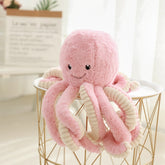Where to Donate Plush Animals: A Comprehensive Guide for Generous Parents
Table of Contents
- Introduction
- The Importance of Donating Plush Animals
- Where to Donate Plush Animals
- Preparing Plush Animals for Donation
- Conclusion
Introduction
Have you ever thought about the journey of a beloved plush animal once it outlives its time in your child's arms? It might be surprising to learn that millions of gently used stuffed animals are waiting for a new home, where they can bring joy and comfort to children in need. Each year, families across the globe declutter their homes, and many plush toys are left without a purpose. However, rather than tossing them aside, we have the opportunity to make a difference by donating them to those who could use a little extra love.
In this blog post, we will explore the various options available for donating plush animals, emphasizing the significance of such contributions. We will cover the types of organizations that accept toy donations, how to prepare your stuffed animals for donation, and the positive impacts your generosity can have on both the recipients and your family. Our aim is to provide you with a thorough understanding of where to donate plush animals and why it's essential to give back to our communities.
As modern parents, we understand the importance of instilling values of kindness and generosity in our children. By donating plush animals, we can teach our kids about empathy while also creating space for new toys. So, let’s embark on this journey together, exploring the various avenues for donating plush animals and sharing the joy of giving.
The Importance of Donating Plush Animals
Donating plush animals is not just about clearing out space in your home; it goes much deeper than that. Plush toys often hold sentimental value and have been a source of comfort and joy for children. However, when they outgrow their plush companions, donating them allows these beloved toys to continue their mission of comfort and companionship elsewhere.
Psychological Benefits for Children
Studies show that children often develop emotional attachments to their toys, which can play a significant role in their social and emotional development. When children donate their plush animals, they learn valuable lessons about generosity, compassion, and understanding the needs of others. This act of giving can also help children process their feelings about letting go, reinforcing the idea that their love can be shared with others.
Community Impact
Donating plush animals can have a profound impact on communities. Many children, particularly those in difficult circumstances—such as those living in shelters, experiencing illness, or facing emotional trauma—often find solace in stuffed animals. By donating your plush toys, you are providing comfort and companionship to these children during challenging times.
Organizations that accept plush donations often ensure that these toys are distributed to children who need them the most. This not only helps in alleviating some distress but also promotes a sense of normalcy and joy in their lives.
Where to Donate Plush Animals
Now that we understand the significance of donating plush animals, let’s explore the various places where you can make your donations. From local charities to hospitals, there are numerous options available.
1. Charities and Nonprofits
Many charitable organizations welcome plush toy donations. These organizations often serve families and children in need, ensuring that your toys reach those who will appreciate them most.
- Goodwill and Salvation Army: These widely recognized charities accept toy donations at their local branches. They often provide toys directly to families in need or sell them, using the proceeds to fund their charitable efforts. Before donating, it’s wise to call your local branch to confirm they are accepting plush animals.
- Stuffed Animals for Emergencies (SAFE): This nonprofit specifically collects and distributes stuffed animals to children facing traumatic situations. They aim to ensure that every child going through a crisis has access to a cuddly companion. You can find a local chapter to donate your plush animals, and they often have a structured process for accepting donations.
2. Hospitals and Medical Facilities
Many hospitals accept plush toys for their young patients. These toys can be used to comfort children during their hospital stays or procedures. It’s essential to check with the facility beforehand, as some hospitals have specific guidelines about the types of toys they can accept.
- Children's Hospitals: Often have toy wish lists posted on their websites. They may specify the kinds of plush toys they need and any safety regulations you should follow.
- Doctor's Offices: Pediatric offices frequently have toys in their waiting areas to keep children entertained. Consider reaching out to your local pediatrician's office to see if they need any donations.
3. Daycare Centers and Schools
Local daycare centers and schools are another excellent option for plush animal donations. These institutions often have many children who would cherish a new friend to play with.
- Daycare Facilities: Many daycare centers are always on the lookout for toys to engage their young attendees. Contact nearby centers to see if they would welcome your plush donations.
- Preschools and Elementary Schools: These schools may accept plush animals for use in classrooms or for children in need within their communities.
4. Shelters and Transitional Housing
Shelters for families, women, and children are often overlooked donation sites for plush toys. Children arriving at these facilities frequently come with few possessions, so your generous donations can make a significant difference.
- Women’s Shelters: These shelters often cater to mothers and children fleeing domestic situations. Plush toys can provide comfort and security to children during a tumultuous time.
- Homeless Shelters: Many families enter shelters with limited resources. Donating plush animals can help brighten their days.
5. Religious and Community Centers
Religious institutions often have programs for helping families in need and are great places to donate plush animals.
- Churches, Synagogues, and Mosques: Many places of worship run outreach programs that support needy families in their communities. Contact them to see if they accept toy donations or know of organizations that do.
- Community Centers: Local community centers often serve children through various programs and activities. They may welcome plush toys for their events or after-school programs.
6. Emergency Services
Local police and fire departments sometimes accept plush animals to comfort children involved in emergencies. These toys can help alleviate fear and provide emotional support during distressing situations.
- Police Departments: Many departments keep stuffed animals on hand to give to children at the scene of an accident or emergency.
- Fire Departments: Similar to police departments, firefighters may carry plush toys to comfort children in crisis. Reach out to your local fire station to inquire about their needs.
7. Online Platforms and Social Media
With the rise of digital platforms, there are now online avenues to donate plush animals. Websites and social media groups often facilitate connections between donors and those in need.
- Facebook Groups: Search for local community groups dedicated to helping families in need. Many of these groups can help connect you with individuals or organizations looking for toy donations.
- Freecycle and Nextdoor: These platforms allow you to offer your gently used toys to neighbors in your area. You can directly reach families who might appreciate your donations.
Preparing Plush Animals for Donation
Before donating your plush animals, it's crucial to prepare them properly. This ensures that they are clean, safe, and ready to bring joy to their new homes.
1. Cleaning and Sanitizing
Stuffed animals can accumulate dirt and germs over time, so it's essential to clean them before donating. Here are some steps to follow:
- Washing: Most plush toys can be machine washed on a gentle cycle. Use mild detergent and avoid strong fragrances that may irritate sensitive skin.
- Drying: Air-dry the toys or tumble dry on low heat, ensuring they are completely dry before packing them for donation.
- Inspection: Check for rips, tears, or heavy stains. If a toy is damaged, consider repairing it or discarding it if it cannot be salvaged.
2. Packaging for Donation
Once your plush animals are clean and ready to go, packaging them appropriately is the next step.
- Boxing: Use sturdy boxes to pack your plush animals. If you have multiple toys, group them by size or type to make it easier for organizations to sort.
- Labeling: Clearly label the boxes and indicate their contents. This helps organizations understand what they’re receiving and who might benefit from the donations.
Conclusion
Donating plush animals is not just an act of decluttering; it’s a meaningful gesture that impacts both the giver and the receiver. By choosing to donate, we foster a sense of community, compassion, and empathy in our children and ourselves. Each plush toy we pass on can provide comfort, joy, and companionship to a child in need, making a world of difference in their lives.
As we’ve explored, there are numerous avenues for donating plush animals—from local charities to hospitals, schools, and community organizations. Each option presents an opportunity to engage with our communities and teach our children the values of giving and kindness.
So, as you prepare to declutter your home, consider the journey of those plush animals and the joy they can continue to bring. Together, let’s make a positive impact in our communities by ensuring that these beloved toys find new homes where they can spread love and comfort.
FAQ
What types of plush animals can I donate?
Most plush animals in good condition can be donated. However, avoid donating items that are heavily worn, damaged, or have broken parts. It’s best to give toys that are clean and free of rips or stains.
Are there any organizations that won’t accept plush toy donations?
Some organizations have specific guidelines regarding the types of items they can accept. For example, hospitals may only accept new toys due to health regulations. Always check with the organization before donating.
How can I teach my children about the importance of donating their toys?
Involve your children in the donation process. Explain why donating is important and how their plush animals can help other children. Encourage them to choose toys they no longer play with and discuss how it feels to give back.
Is there a best time of year to donate plush animals?
While donations can be made year-round, the holiday season often sees an increased need for toys. Many organizations ramp up their efforts during this time, making it a perfect opportunity to donate.
Can I receive a tax deduction for donating plush animals?
In many cases, you can claim a tax deduction for the fair market value of items donated to qualified charities. Be sure to keep a receipt or any documentation provided by the organization for your records.









